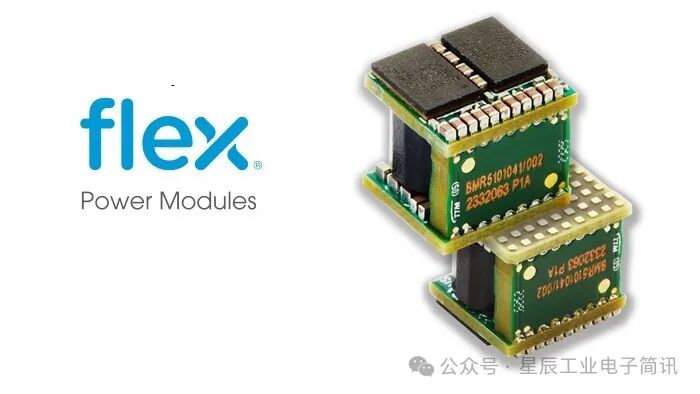
Flex Power Modules has launched an upgraded version of its BMR510 dual-phase integrated power module. The new BMR5101041/002 version not only improves efficiency and increases the peak current from 140A to 160A, but also includes a 528μF onboard output capacitor, significantly enhancing transient response. This onboard capacitance reduces the need for customers to add external components, thereby freeing up valuable PCB space and simplifying power supply design. The module provides a continuous output current of 80A and an adjustable output voltage ranging from 0.5 to 1.8V, meeting the growing power demands of high-performance applications such as AI, advanced CPUs, GPUs, IPUs, FPGAs, and ASICs.
The BMR5101041/002 is compact yet powerful, utilizing advanced core materials to achieve high inductance while operating at lower switching frequencies, thus minimizing switching losses. These optimizations result in impressive overall efficiency, reaching up to 93% at light loads and up to 87.5% at full load.
Reliability is also a key feature of this upgraded BMR510 version. The top cooling and power stage mounted on the upper side ensure excellent thermal performance, guaranteeing consistent operation even under challenging conditions. Operating with a 5V Vcc, favored by many power designers due to its wide availability, further enhances the module’s versatility.
The module operates within an input voltage range of 4.5 to 15V, with an overall footprint of only 0.9cm² (0.14in²). Although the increased onboard capacitance slightly raises the module’s height to 9.5mm, this enhancement reduces the need for external components, optimizes PCB space, and ensures the module remains highly suitable for space-constrained layouts.
Termination options include Land Grid Array (LGA) or solder bumps, allowing for flexible integration into various designs. Additionally, the halogen-free module integrates essential protection features such as overcurrent and overtemperature protection, as well as tri-state pulse width modulation (PWM) input. Designers benefit from integrated temperature and current monitoring for each phase, along with the capability to parallel multiple units to enhance power delivery, resulting in efficient and scalable voltage regulator module (VRM) performance.